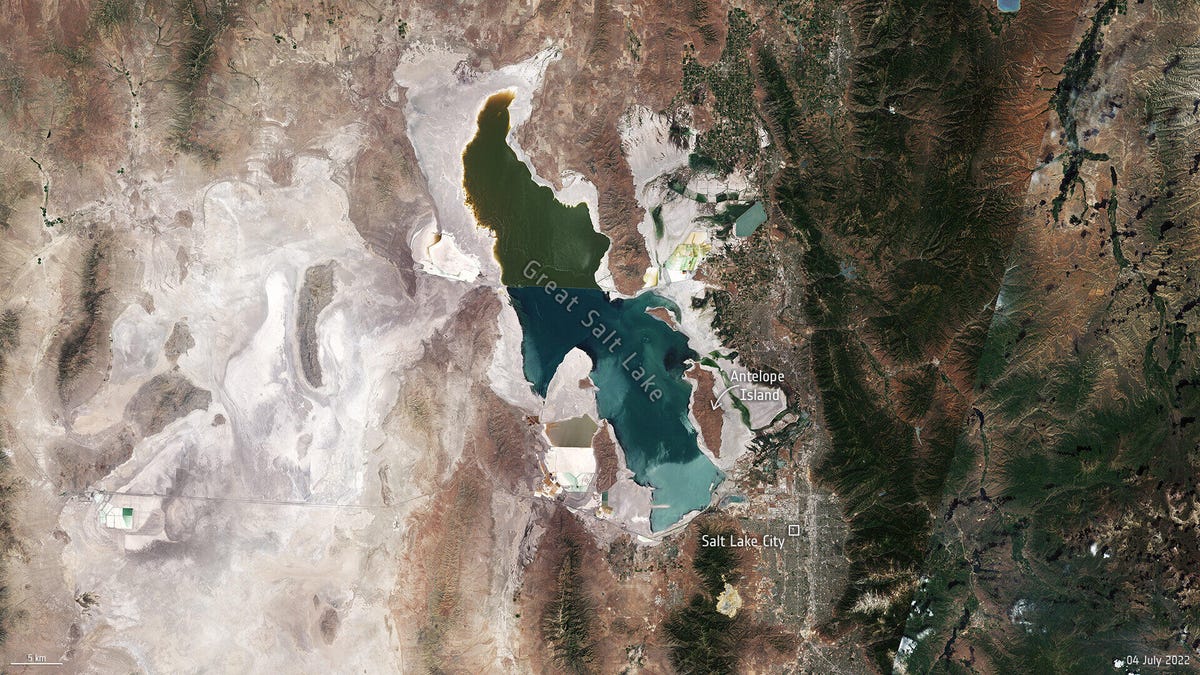Utah's Great Salt Lake Seen 'Disappearing' in Alarming Space Images
The famously salty lake is at its lowest level since recordkeeping began in the mid-1800s.
It's a story that's playing out across the US West. The levels of lakes are dropping during a persistent drought as the human-caused climate crisis intensifies. The European Space Agency shared a new satellite look at Utah's Great Salt Lake this week, and it shows just how much the famous body of water has diminished.
The July 2022 view comes from ESA's Earth-observing Copernicus Sentinel-2 mission. The space agency used a stark headline: "Utah's Great Salt Lake is disappearing." The image shows large parched areas of the lake, with the lakebed exposed as light-colored ground.
A processed view of Utah's Great Salt Lake as it looked in 1985 with much higher water levels than in 2022.
For contrast, ESA compared the 2022 satellite image with a composite of views captured by the US Landsat 5 satellite in 1985. The difference is stark. Both images include labels pointing out the location of Salt Lake City and Antelope Island, which is now largely sitting on exposed lakebed, but was surrounded by water in 1985.
A US Geological Survey report from early July found the lake had dropped below its historic low elevation based on records dating back to 1847. "This is not the type of record we like to break," said Utah Department of Natural Resources executive director Joel Ferry in a statement at the time. "Urgent action is needed to help protect and preserve this critical resource. It's clear the lake is in trouble."
USGS data shows the lake has little more than a fourth of the volume of water it did at its high point in 1987. The megadrought and its climate change underpinnings are one culprit, but there has also been high water usage demand on the streams that feed the lake due to agriculture and a growing population in and around Salt Lake City.
Urban expansion and water demand are playing into the decline of the Great Salt Lake. This satellite image used data from the World Settlement Footprint project to trace the expansion of the city. The growth from 1985 to 2019 is highlighted in red.
ESA points to a host of consequences from the drop in water level. "The lake generates snowpack, acts as a refuge for hundreds of migratory birds and other wildlife, and generates millions in economic development through mineral extraction and tourism," the space agency said. The dried-out lakebed also kicks up airborne dust laced with heavy metals, creating the potential for a public health hazard.
The drying up of the Great Salt Lake likely hasn't reached its peak yet. Said the USGS, "Based on historic data, lake levels will likely continue to decrease until fall or early winter when the amount of incoming water to the lake equals or exceeds evaporative losses."


